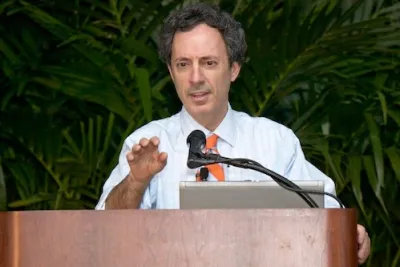Table of Contents
The change in political spectrum has been paired with a decrease in the prevalence of core curriculums including history and American politics. This phenomenon has also been seen on the UC campuses, where courses in Western civilization are no longer required and where American politics is not a requirement of the Political Science major. Peter Berkowitz, a senior fellow at the Hoover Institution, connects these two phenomena in his article “How California’s Colleges Indoctrinate Students.” Berkowitz explains that the increase in a democratic majority has tempted professors to teach a more politically biased version of their topics, leading to a disappearance of more traditional material.
“People have their own view-point. It takes an act of self-restraint to make the case of all sides of the question rather than insisting on the case for what you regard is the best point of view,” Berkowitz argued. He added that if conservatives are not as present on campus, able to teach the opposing viewpoint, liberal professors have the ability to push for a more one-sided curriculum.
Although arguing that there has been an increase in more liberal professors on college campuses is easier to do, leaping to the conclusion that this has lead to a disappearance of core curricula is more difficult. In Berkowitz’s article, he quotes “a recent study by UCLA’s prestigious Higher Education Research Institute [which] found that more faculty now believe that they should teach their students to be agents of social change than believe that it is important to teach them the classics of Western civilization.” As a result, the increase in liberal professors has pushed towards a tendency of teaching more modern day and activist based curricula.
“Faculty do not like to teach general courses. They prefer to teach boutique courses where they can specialize on their own perspectives and own research,” Berkowitz argued. With a majority in the department, professors have the ability to do so with little push back from a minority of faculty who may be ideologically opposed. Berkowitz noted that this phenomenon could easily happen if conservatives were the majority. However, “in addition to the fact that the faculty is skewed to the left, is a change in what professor believe their role or mission is…it’s a combination of these two developments. Finally when the other side is not well represented, individuals hold their own views in a dogmatic fashion,” Berkowitz pointed out.
As liberal professors teach students to be politically and socially active, traditional course material becomes lost. Becoming an agent of social change becomes more important than ensuring classic foundations. Kyle Huwa, a student at Stanford and the President of the Stanford Conservative Society, nuanced the contributing factors to the disappearance of such a curriculum.
“The disappearance has been happening over the course of several decades. Some of this is the result of modernization, because technical skills are more and more valuable…I believe any liberalization occurring at Stanford is coming from many more factors than just faculty bias,” Huwa noted. The demand for undergraduate students with tangible skills that can be used in the job market highly contributes to time taken away from teaching core values. If our society’s demands are changing, then professors are more likely to teach different as well.
Berkowitz’s perspective is based on the idea that professors are not only politically engaged but teach their students to be active as well. However, earlier this year, the Review published an article about the presence of liberal professors on campus and the decrease in trend of politically active professors. Berkowitz answered this claim with a nuance.
“There needn’t be any contradiction. No doubt professors are more professionally oriented…You may not be active outside of campus. But if your scholarly field is designed in such a way to promote a political agenda, then you are skewed away from a traditional core. The career is one of advocacy and that moves into the classroom,” Berkowitz explained. Although professor may not picket with students during protests, their ideologies seep into the classroom and are not challenged.
As students are increasingly less required to take traditional core classes that educate students on the perspectives of different philosophers and historians, making sure to inculcate our national history as a prerequisite to life, Berkowitz notices a problem in our educational system. There is recognition that students only have so much time in college and that universities cannot do everything. However, “some colleges don’t even require literature majors to read Shakespeare,” Berkowitz explained. These are the fundamental issues that must be addressed.
A balance must be formulated between pushing students to do something beyond the classroom, making sure that objective perspectives are inculcated in the classroom and presenting students with the foundations for the studies they want to pursue. Berkowitz proposes a concerted effort between professors, administrators and alumni, who all have a vested interest in the system.
“Alums who pay a huge amount of money to enable Stanford to operate. In the end, for there to be a change, each of these groups are going to have to exert some pressure. We must expose students to treasures of western civilizations, to educate them from who they are and where they come from, to expose them to the best of what has been thought and said,” Berkowitz concluded.





